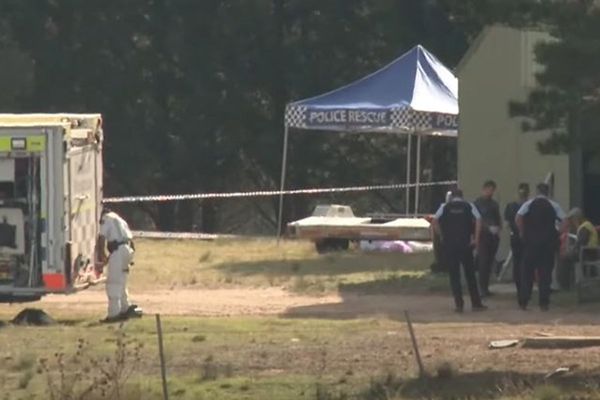
New dwelling approvals in Australia have sunk to their lowest in 12 years, as developers battle high interest rates and rising labour and material costs.
For the year to June, 162,892 houses and apartments secured approval, down 8.5% on the previous year and the least since 2011-12, the Australian Bureau of Statistics reported on Tuesday.
In June, total dwellings approved fell 6.5% to 13,237 – worse than the 2.3% drop expected by economists. Private sector residences excluding houses dropped by a fifth to their second-lowest monthly level since January 2012, the ABS said.
New South Wales trailed other major states. Its 19% retreat for private sector house approvals to 1,597 in June was the state’s lowest for that category since January 2013. By comparison, Queensland approved 16.1% more houses, South Australia 7.1% more and Victoria 2.6% more, in seasonally adjusted terms.
“Housing affordability in Sydney has worsened significantly, which may be crimping activity,” said Harry Ottley, an economist at the Commonwealth Bank. “Interest rate cuts from the [Reserve Bank] will be one of the changes required to create a significant upswing in the residential construction cycle.”
Material and labour shortages inflated the value of new houses alone by $19,444 in the year to June, the ABS said.
The ABS is due to release June quarter CPI data on Wednesday, which could determine whether the RBA starts cutting its cash rate this year or resorts to hiking borrowing costs again to stem inflation.
The slide in building approvals also suggests the sector has little momentum despite federal and state governments giving housing a higher priority. The Albanese government’s pledge of 1.2m new homes over five years – or a yearly average of 240,000 – implies a 50% increase on the number of dwellings approved last financial year.
“Construction of multi-units, especially high-rise apartments, has been declining since around 2016 when various state governments imposed stamp duty and land tax surcharges on foreign investors, and the regulator (APRA) imposed limits on lending,” said Tom Devitt, a senior economist at the Housing Industry Association.
“What has been a surprise is just how binding and prolonged the constraints on labour and finance have been on the sector.
“Apartment projects need great certainty that they can be completed within about three years for the relevant parties to be sure of its viability.”
Devitt said the price of skilled trades was still increasing at almost three times its pre-pandemic rate.
“Other policy levers need to be pulled to reduce the costs of land and construction,” he said, including faster land releases, support for higher density developments and visa streamlining for in-demand trades.
Eliza Owen, CoreLogic’s head of research, said June was another “dismal result”. Still, detached house approvals maintained a slight elevation from their low in January, although they remain about 6% below the monthly average over the past decade.
“Many in the industry may also be tied up with a relatively elevated backlog of work that is approved, but yet to be complete,” she said. “In the March quarter, there was still an unusually high 260,000 dwellings accumulated in the pipeline.”
Owen said the housing market was in the midst of its 17th consecutive month of price increases. That said, units hadn’t increased as much as detached homes in recent years, undermining the feasibility of new apartment projects.
Construction costs for new houses rose 0.5% in the June quarter, down from a high of 4.8% in the September quarter of 2022, indicating higher interest rates were having some impact, she said.
Ben Phillips, an associate professor at the Australian National University’s Centre for Social Research and Methods, said uncertainty about future land and house prices was among the drags on the industry.
“In spite of strong population growth, a lot of this is just catch up after very weak growth during Covid,” Phillips said. “We had exceptionally strong building levels between about 2014 and 2022 so it’s not that surprising that approvals and building levels in general are waning.”
The opposition housing spokesperson, Michael Sukkar, said the incoming housing minister, Clare O’Neil, “should be honest with the Australia people that based on Labor’s own figures they are at least 350,000 homes short of this promise”.
“This means fewer homes will be built in this five-year period than any five-year period over the last 25 years,” Sukkar said.







